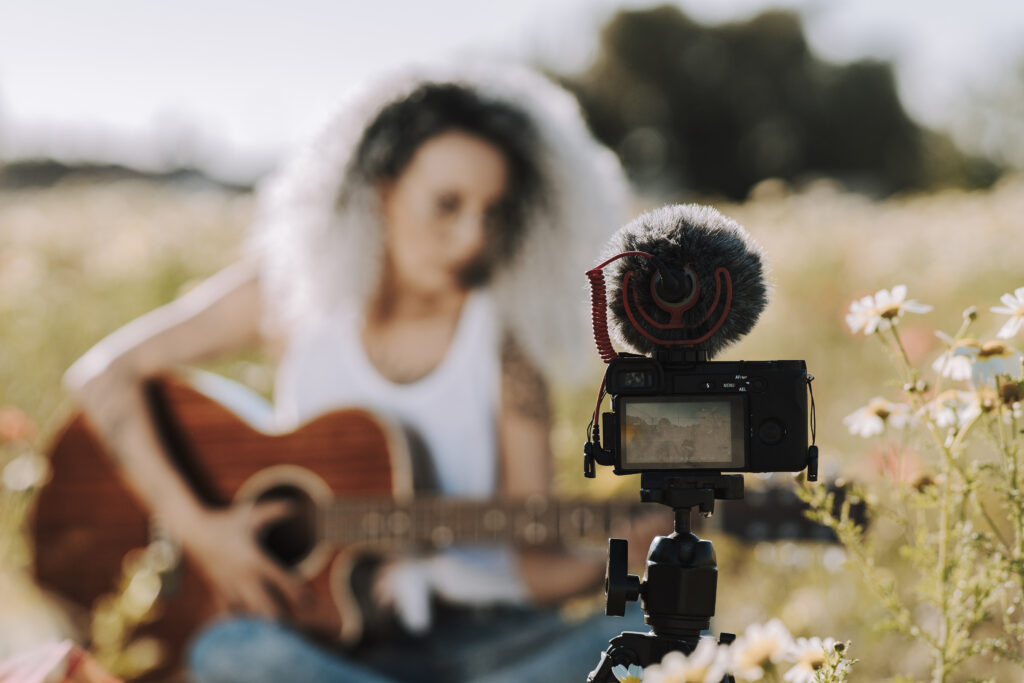SMACC Guide: Creating a Music Video – In-Depth Process, Techniques, and Budgeting
Music videos are more than just promotional tools for songs—they’re powerful visual storytelling pieces that amplify the artist’s voice. For SMACC members venturing into music video production, understanding the process, collaborating with artists, and working within budgets are essential. This comprehensive guide will cover every aspect of music video creation, including five examples of classic music videos, techniques for shooting, and key budget considerations.
1. Collaborating with the Artist
One of the most crucial parts of creating a music video is understanding the artist’s creative concept. This helps set the foundation for the entire project and determines the direction you’ll take in pre-production and shooting.
a. Understanding the Artist’s Vision
• Concept Meetings: Sit down with the artist to discuss their goals for the video. Is the video meant to tell a story, or is it more abstract and performance-based?
• Mood and Style: Whether they want it to be energetic, emotional, or avant-garde, try to capture their unique style in the visuals.
• References: Ask if they have any music videos, films, or artworks that inspire their vision. This helps ensure that you’re both on the same page.
b. Setting Expectations
• Timeline: Define a clear timeline for shooting, editing, and the final delivery.
• Budgeting: Discuss the budget early on to ensure you’re working within their means (more on budgets later).
• Deliverables: Clarify what’s expected—full-length video, teasers for social media, or behind-the-scenes footage.
2. Classic Music Videos & Their Styles
To inspire and guide your creative process, here are five examples of iconic music videos and their styles:
1. Michael Jackson – “Thriller” (1983) Here
• Style: Storytelling, horror-themed, choreography-driven.
• Key Takeaway: The video is more of a short film than a typical music video, with its narrative and dramatic set pieces.
• Inspiration: For elaborate videos with strong storylines or cinematic elements.
2. Beyoncé – “Single Ladies (Put a Ring on It)” (2008) here
• Style: Minimalist, black-and-white, performance-based.
• Key Takeaway: Proof that a simple concept, such as a single shot of choreography, can be extremely powerful if executed well.
• Inspiration: Ideal for low-budget videos focusing on performance and movement.
3. OK Go – “Here It Goes Again” (2006) Here
• Style: One-take, quirky, and creative use of props (treadmills).
• Key Takeaway: This low-budget video became iconic because of its unique concept and impressive one-take execution.
• Inspiration: Shows how creativity and planning can compensate for limited resources.
4. Lady Gaga – “Bad Romance” (2009) Here
• Style: Avant-garde, fashion-forward, visually extravagant.
• Key Takeaway: Visually stunning and full of symbolism, this video is a masterclass in creating a high-impact visual story through costumes and set design.
• Inspiration: For videos that rely on art direction, costumes, and symbolism.
5. Kendrick Lamar – “HUMBLE.” (2017) Here
• Style: Cinematic, powerful imagery, social commentary.
• Key Takeaway: This video uses lighting, wide-angle shots, and symbolic imagery to make a statement, proving that visuals can be as profound as lyrics.
• Inspiration: Ideal for artists who want to convey deeper messages with visually striking content.
3. Shooting Techniques
a. Camera Work & Angles
• Wide Shots: Perfect for showing off choreography or landscapes.
• Close-Ups: Focus on the artist’s face for emotional moments.
• Dynamic Angles: Experiment with low, high, and Dutch angles to add drama.
b. Handheld vs. Gimbal
• Handheld: Adds a raw, organic feel to the video. Ideal for indie or documentary-style videos.
• Gimbal (Stabilizer): For smooth, cinematic shots, use gimbals like the DJI Ronin-S or Zhiyun Crane 3 to follow the artist as they move.
c. Slow Motion & Time Lapse
• Use slow-motion for dramatic effect during emotional or action-packed moments.
• Time-lapse is great for showing the passage of time or creating a fast-paced intro/outro.
d. Portable Speakers for Syncing
• During the shoot, play the studio track on portable speakers like the JBL Boombox 3 or UE Megaboom so the artist can lip-sync accurately.
• Tip: Even if you use handheld shots, make sure the speaker volume is high enough for the artist to hear, but low enough to avoid audio bleed in the raw footage.

4. Post-Production Essentials
a. Editing and Syncing
• Use professional software like Adobe Premiere Pro or Final Cut Pro to sync the visual footage with the studio-quality music track.
• Tip: Break the song down into smaller segments to make syncing easier and ensure timing aligns perfectly with the beats.
b. Color Grading
• Color grading is essential to enhance mood and tone. For example, warm tones work well for love songs, while cooler tones suit somber or atmospheric tracks.
• Software like DaVinci Resolve offers powerful color grading tools.
c. Special Effects
• Incorporate visual effects to match the energy of the song. Fast cuts, glitch effects, and motion graphics can be used for high-energy dance tracks, while slow fades and transitions work well for ballads or intimate performances.
5. Budgeting for a Music Video
a. Low-Budget Videos (€500–€2000)
• Key Focus: Simplicity, creativity, and DIY solutions.
• What’s Possible: Performance-based videos, one location, limited props. Think about videos like OK Go’s treadmill video, which focused on a single, creative concept.
• Essentials: Affordable camera gear, LED lighting kits (like the Neewer 660 LED), and one or two crew members.
b. Mid-Range Budget (€2000–€10,000)
• Key Focus: Multiple locations, props, and professional-grade lighting.
• What’s Possible: Story-driven videos with several setups, better production design, and more elaborate lighting setups like Aputure Light Storm kits and gimbals.
• Essentials: Cinematographer, lighting crew, and post-production team.
c. High-End Budget (€10,000+)
• Key Focus: Full-scale productions with complex storylines, professional-grade cameras like RED Komodo or Sony FX9, and large crews.
• What’s Possible: Full crew, including choreographers, lighting techs, production designers, and professional post-production with visual effects.
6. Tips for a Smooth Production
• Scout Locations in Advance: Ensure that the location matches the artist’s vision and that you have necessary permits if shooting in public spaces.
• Bring Backup Gear: Always have extra batteries, SD cards, and lighting backups in case equipment fails.
• Collaborate in Real Time: Have the artist review takes on set to ensure you’re capturing what they want.
• Keep Communication Open: Constantly check in with the artist throughout the process to ensure their vision is being realized.
Conclusion
Creating a music video is a dynamic process that requires strong collaboration with the artist, creativity in shooting, and an understanding of the budget constraints. Whether working with a low-budget or a high-end production, focusing on creative storytelling, proper planning, and using efficient techniques like syncing with portable speakers can lead to a polished final product. By following this guide, SMACC members can bring their music video projects to life, ensuring both the artist’s vision and audience expectations are met with high-quality visuals.


